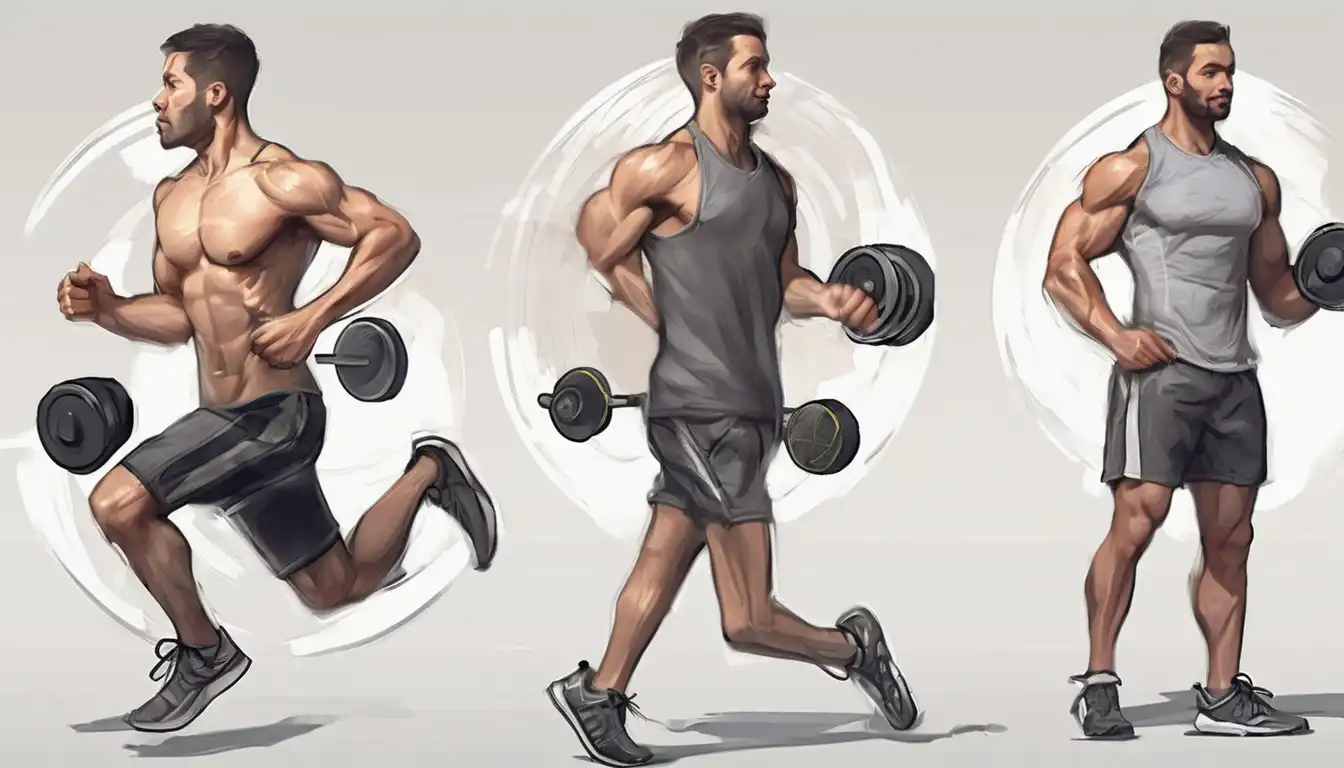Getting Started: Your Path to Fitness Success
Embarking on a fitness journey can feel overwhelming, but with the right approach, anyone can build a sustainable routine that delivers real results. Whether you're looking to lose weight, build strength, or simply improve your overall health, this comprehensive guide will walk you through every step of creating an effective fitness plan tailored to your needs.
Setting Realistic Fitness Goals
Before you even think about which exercises to do, it's crucial to establish clear, achievable goals. Many beginners make the mistake of setting overly ambitious targets that lead to frustration and burnout. Instead, focus on SMART goals: Specific, Measurable, Achievable, Relevant, and Time-bound.
Start by asking yourself what you want to accomplish. Are you aiming to lose 10 pounds in three months? Want to run your first 5K? Or simply build the habit of exercising three times per week? Write these goals down and track your progress regularly. Remember that consistency matters more than intensity when you're starting out.
Choosing the Right Exercise Program
With countless workout options available, selecting the right program can be confusing. Here are the main categories to consider:
Cardiovascular Exercise
Cardio workouts improve heart health and burn calories. Excellent options for beginners include:
- Brisk walking (30 minutes daily)
- Cycling (stationary or outdoor)
- Swimming (low-impact full-body workout)
- Dancing (fun way to stay active)
Strength Training
Building muscle boosts metabolism and supports joint health. Start with:
- Bodyweight exercises (push-ups, squats, lunges)
- Resistance bands (portable and versatile)
- Light dumbbells (focus on proper form)
Flexibility and Balance
Don't neglect mobility work. Incorporate:
- Basic stretching routines
- Yoga for beginners
- Balance exercises
Creating Your Weekly Schedule
A balanced weekly routine might look like this:
- Monday: 30-minute cardio
- Wednesday: Full-body strength training
- Friday: 30-minute cardio + stretching
- Weekend: Active recovery (light walk or yoga)
Start with 3-4 days per week and gradually increase as your fitness improves. Remember that rest days are essential for muscle recovery and preventing injury.
Essential Equipment for Beginners
You don't need an expensive gym membership to get started. Basic equipment includes:
- Comfortable athletic shoes
- Moisture-wicking clothing
- Water bottle
- Exercise mat
- Set of resistance bands
As you progress, you might consider investing in adjustable dumbbells or a fitness tracker to monitor your activity levels.
Proper Form and Technique
Learning correct exercise form is crucial for preventing injuries and maximizing results. Common mistakes beginners make include:
- Rounding the back during lifts
- Locking joints during exercises
- Holding breath instead of breathing rhythmically
Consider working with a personal trainer for a session or two, or use reputable online resources to learn proper techniques. Always prioritize quality over quantity when performing exercises.
Nutrition and Hydration
Exercise alone isn't enough - proper nutrition fuels your workouts and supports recovery. Key principles include:
- Eating balanced meals with lean protein, complex carbs, and healthy fats
- Staying hydrated throughout the day
- Timing meals around workouts (light snack 30-60 minutes before exercise)
- Avoiding processed foods and sugary drinks
Remember that you can't out-exercise a poor diet. Focus on whole foods and listen to your body's hunger cues.
Tracking Your Progress
Monitoring your improvements helps maintain motivation. Effective tracking methods include:
- Workout journal or fitness app
- Weekly measurements (waist, hips, etc.)
- Progress photos
- Fitness milestones (increased weights, longer endurance)
Celebrate small victories along the way. Every workout completed is an achievement worth recognizing.
Overcoming Common Challenges
Every beginner faces obstacles. Here's how to handle them:
Lack of Motivation
Find an accountability partner, join group classes, or set up a reward system for consistent workouts.
Time Constraints
Break workouts into shorter sessions throughout the day if needed. Even 10-minute bursts of activity add up.
Plateaus
Change your routine every 4-6 weeks to keep your body challenged and prevent boredom.
Staying Safe and Injury-Free
Safety should always come first. Important precautions include:
- Proper warm-up (5-10 minutes of light cardio)
- Cool-down and stretching after workouts
- Listening to your body (pain means stop)
- Gradually increasing intensity
- Consulting a doctor if you have pre-existing conditions
Building Long-Term Habits
The ultimate goal is making fitness a permanent part of your lifestyle. Strategies for sustainability include:
- Finding activities you genuinely enjoy
- Scheduling workouts like important appointments
- Being flexible and adapting when life gets busy
- Focusing on how exercise makes you feel, not just how it makes you look
Remember that fitness is a journey, not a destination. There will be ups and downs, but consistency over time yields the best results. Start where you are, use what you have, and do what you can. Your future self will thank you for taking this important step toward better health.
Ready to take the next step? Consider exploring our guide on nutrition basics for active lifestyles to complement your new fitness routine. For those interested in specific workout plans, check out our effective home workout routines that require minimal equipment.
